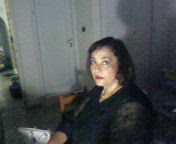ANCIENT CITIES OF THE INDUS VALLEY CIVILISATION
A BOOK BY JONATHAN MARK KENOYER
(AMERICAN INSTITUTE OF PAKISTAN STUDIES)
PUBLISHED BY OXFORD UNIVERSITY PRESS.
My fascination with historical and archeological books and journals started when I was about 9 or 10 years old, while rummaging through in anxious anticipation, childlike fascination, a huge cupboard full of books in my father and mothers’ living room some forty years back. My dad was in Oxford University Press , Karachi and had a vast array of proof copies, and other books from Oxford also. The fascination as I discovered the treasures of India, the jungles by Jim Corbett, the Asian cities’ deep mysteries, remains to this day , quenching my thirst to know more and more about civilizations, people and cultures. How they lived, what they ate, what rites and rituals they performed and the historical insight into a region.. tThe Indus Valley Civilisation is one such civilization whose history and archeological knowledge came to be our treasure trove much after Pakistan was born
.In the preface to this text, Richard H. Meadow writes that ‘I met Jonathan Mark Kenoyer in 1975 at the archeological site of Balakot. It was the third year of excavations being carried out by the late George Franklin Dales. Jr.(1927-1992) at the small Harappan and pre-Harappan settlement situated near the Arabian sea coast some 50 miles north-northwest of Karachi’ .He then further explains on how he moved from work on Eastern Iran and Oman to the Indus Valley which was logical. It was here that he came to know the high quality artifact drawings of Mark who would come to Balakot for next field season. Excavations in Balakot were completed in early 1977. After that Jonathan Mark continued to visit Pakistan and drew his material and published work with George Dales. In 1985 he started working as field director of the University of California, Berkely, Harappa project.. He writes that ‘even if I am not convinced of all that is written in this book, I do believe the story is better than any pronounced in the past two decades about a literate civilization that we still can only know from archeology’. He says that ‘ I was particularly impressed by by the effort to examine the interplay of technology, ornamentation., social structure, ideology which I was obliged to look at in a new light.
In Introduction the author gives a detail of how the study of artifacts especially pottery, seals etc gives and insight into the Indus valley Civilization, interaction with the world and ‘urbanized’ living. There is comparison of early states of the world, beautiful pictures of the coins, seals, terracotta mother godess, the modern craftsman carrying out 5000 year old tile decoration, excavation sites’ photos to give the reader an insight into this great civilization.
In Chapter 2, Origins of Urban Society , the author starts with the detail of the first settlers, using the study of stone tools and comparing with Mehergarh civilization,
Throughout this chapter a pictures of artifacts and diagram drawings of dwellings, burial, goat sacrifice ,storage areas ,figurines etc.
Chapter 3, Indus Cities, towns and Villages gives a good insight into the cities, buildings , burial sites, waterworks and other structures.
Chapter 4 , The Indus Script and It’s Uses describes the Indus script. The author says that the Indus script was invented around some 2600 B.C., reflects the fundamental changes in social, political and ritual organization that accompanied the formation and consolidation of cities. He gives a detail of when the inscribed seals were used they ushered an era of hegemony lasting some 700 years, A vast detail of the symbols used with photographs and diagrammatic representation is present.
Chapter 5, Rulers and Traders of the Indus Cities gives a detail of the figurines such as the ‘Priest King’ of Moenjo Daro which shows the importance of the religious leader in the civilization. The author says that this civilization differs from the others in the way that the rulers governed through the use of trade and religion and not military might which other civilizations used. ‘no monuments were erected to glorify their power, and no depiction of warfare or conquered enemies are found in the entire corpus of Indus art or sculpture. Instead the rulers carried striking carved seals with animal symbols and writing and wore ornaments made with secret technologies and rare materials .These symbols of wealth and power were what set the rulers apart from the common people and they also reflect the many different economics and social levels that were controlled by the rulers.’
Seals , various artifact descriptions and photographs enrich this chapter.
Chapter 6 , Religious Art and symbols ; trees such as papal and banyan have been picturised in jars relief and seen as objects of worship.. these trees are widespread in Indus valley. Unicorn, terracotta female figurine with bangles also show private symbols of wealth.abstarct symbols such as the endless knot motif on copper tablets, stepped cross motif on incised steatite seal also are seen
In this chapter the author beautifully gives a correlation between the use of motifs and the significance to religion and rituals. He writes that the use of fish motif again on painted globular storagejars that were probably used in marriage or rituals which represents fertility in later Buddhist and Hindu iconography. Beautiful pictures and details of male and female figurines, bangles, bath tile motifs showing circles, heart or half kidney shaped motifs, seals with animal motifs are given in this chapter.
The other chapters also take you into a journey to this civilization in a complete and ultimate way.
( The pictures on this post are not from book but from Wikipedia, source.)




No comments:
Post a Comment